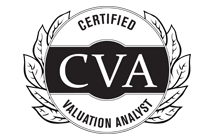20 Feb
I’m often asked when to use “fair market value” versus “fair value” in a valuation. The answer is that the purpose of the valuation often determines the standard of value that should be used.
- Fair market value is defined by the IRS in Revenue Ruling 59-60 as “the price at which property would change hands between a willing buyer and a willing seller when the former is not under any compulsion to buy and the latter is not under any compulsion to sell, both parties having reasonable knowledge of reasonable facts”.
The AICPA and several other organizations changed this definition slightly to define fair market value as “the price, expressed in terms of cash equivalents, at which property would change hands between a hypothetical willing and able buyer and a hypothetical willing and able seller, acting at arm’s length in an open and unrestricted market, when neither is under compulsion to buy or sell and when both have reasonable knowledge of the relevant facts.”
2. Fair value also has multiple definitions. The FASB defines fair value as “the price that would be received to sell an asset or paid to transfer a liability in an orderly transaction between market participants at the measurement date”. In a legal setting, different states may define fair value differently.
To make it even more confusing, there are other standards of value that are commonly used, such as investment value. This standard of value is often used to value a company with a strategic buyer because it considers synergies that would be available to a specific buyer.
With all these different standards of value and differing definitions, a valuation professional must understand which standard of value is needed in your circumstances. It is important because it could affect the valuation techniques and assumptions they will use. So, if you hire a valuation professional and they ask you why you need the valuation and which standard of value is required, you will now have a better understanding of why they are asking these questions.
My next blog post will give you additional details to help you understand the major differences between “fair market value” and “fair value”.






